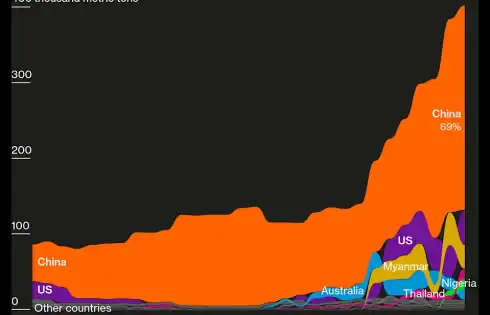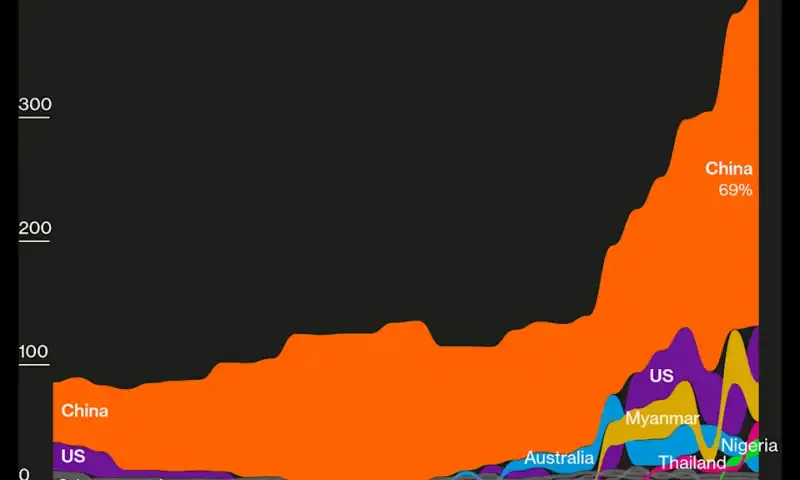
The S&P 500 Index ($SPX) (SPY) on Monday fell by -0.92%, the Dow Jones Industrials Index ($DOWI) (DIA) fell by -1.18%, and the Nasdaq 100 Index ($IUXX) (QQQ) fell by -0.83%. December E-mini S&P futures (ESZ25) fell -0.83%, and December E-mini Nasdaq futures (NQZ25) fell -0.69%.
US stock indexes fell on Monday ahead of key news later this week, including a raft of delayed US economic reports and Nvidia’s earnings on Wednesday. Stocks had some underlying support from a +3% jump in Alphabet after Berkshire Hathaway disclosed a $4.9 billion stake in the company.
The markets are looking ahead to Nvidia’s earnings report after Wednesday’s close for further information on the AI outlook. Also, earnings from Walmart, Target, and Home Depot this week will provide insight into the health of consumer spending.
This week’s US economic schedule is very heavy as a deluge of delayed economic reports will be released. Tuesday brings the ADP weekly employment report, the NY Fed’s US business leaders survey, industrial production, Nov NAHB housing index, Aug factory orders, and Aug durable goods orders. Wednesday brings MBA weekly mortgage applications, Aug trade balance, and the Oct FOMC meeting minutes. Thursday brings weekly unemployment claims, the Sep unemployment report, the Philadelphia Fed report, Oct existing home sales, and the Kansas City Fed manufacturing survey. Friday brings real earnings, the S&P US manufacturing and services PMI reports, the University of Michigan’s US consumer sentiment index, and the Kansas City Fed’s services activity report. Other delayed US economic reports are also expected to be released in the coming days but have not yet been scheduled.
Monday’s economic news was supportive for stocks as the Nov Empire manufacturing general business conditions survey unexpectedly rose +8.0 to a 1-year high of 18.7, stronger than expectations of a decline to 5.8.
The markets are discounting a 41% chance of another -25 bp rate cut at the next FOMC meeting on December 9-10.
On the bullish side for stocks, Fed Governor Christopher Waller on Monday reiterated his call for a rate cut at the December FOMC meeting due to his view that the US labor market is near “stall speed.” A noted dove, Mr. Waller is being considered by President Trump to replace Jerome Powell as Fed Chair, whose term as Fed Chair expires in May 2026.
Q3 corporate earnings season is drawing to a close as 460 of the 500 S&P companies have released results. According to Bloomberg Intelligence, 82% of reporting S&P 500 companies exceeded forecasts, on course for the best quarter since 2021. Q3 earnings rose +14.6%, more than doubling expectations of +7.2% y/y.
Overseas stock markets closed lower on Monday. The Euro Stoxx 50 closed down -0.93%. China’s Shanghai Composite fell to a 1.5-week low and closed down -0.46%. Japan’s Nikkei Stock 225 dropped to a 1-week low and closed down -0.10%.
Interest Rates
December 10-year T-notes (ZNZ5) rose by +3 ticks. The 10-year T-note yield fell -1.6 bp to 4.133%. T-note prices rose slightly on speculation that long-delayed US economic news scheduled for release this week will show weakness in the economy and easing inflation pressures, which could allow the Fed to keep cutting interest rates. T-notes were undercut by news that the Nov Empire manufacturing general business conditions index unexpectedly rose to a 1-year high, a hawkish factor for Fed policy.
European government bond yields moved lower on Monday. The 10-year German bund yield fell -0.7 bp to 2.712%. The 10-year UK gilt yield edged to a 1-month high but ended the day down -3.9 bp at 4.535%.
The European Commission raised its 2025 Eurozone GDP forecast to +1.3% from a May forecast of +0.9% and kept its 2025 Eurozone inflation forecast unchanged from May at +2.1%.
ECB Vice President Luis de Guindos said financial stability risks “remain elevated in view of uncertainty over geoeconomic trends and the ultimate impact of tariffs in a volatile international environment.”
Swaps are discounting a 2% chance for a -25 bp rate cut by the ECB at its next policy meeting on December 18.
US Stock Movers
Alphabet (GOOGL) rose more than +3% to lead gainers in the Nasdaq 100 after Berkshire Hathaway disclosed a $4.9 billion stake in the company. Tesla (TSLA) rose more than +1%. However, the other Magnificent Seven stocks closed lower, with losses of more than -1% in Nvidia (NVDA), Apple (AAPL), and Meta (META).
Amazon.com (AMZN) fell -0.8% after Bloomberg reported that the company is looking to raise $12 billion from its first US bond sales in three years, suggesting an intention to accelerate spending on AI and other areas.
Chip stocks nearly all closed lower on Monday. Micron Technology (MU) was up more than +4% early in the session after Rosenblatt Securities raised its price target on the stock to $300 from $250, but then gave up those gains and ended the day down nearly -2%. Qualcomm (QCOM) closed down more than -4%. Marvell Technology (MRVL), NXP Semiconductors (NXPI), Microchip Technology (MCHP), and Align Technology (ALGN) all closed with losses of more than -3%.
Crypto stocks fell due to Monday’s -3.5% decline in Bitcoin (^BTCUSD) to a new 7-month low. Coinbase (COIN)fell more than -7%, and Galaxy Digital Holdings (GLXY) fell nearly -5%.
Zymeworks (ZYME) rose +29% and Jazz Pharmaceuticals (JAZZ) rose +21% after their collaboration on an experimental combination therapy for cancer of the stomach and esophagus showed topline results from a late-stage trial.
Rubrik (RBRK) fell -2.6% even though Mizuho Securities upgraded the stock to outperform from neutral with a price target of $97.
Gap (GAP) fell -1.6% even though Barclays upgraded the stock to overweight from equal weight with a price target of $30.
Expeditors International of Washington (EXPD) rose +2.8% after UBS upgraded the stock to buy from neutral with a price target of $166.
Aramark (ARMK) fell more than -5% after reporting Q4 revenue of $5.05 billion, weaker than the consensus of $5.17 billion.
Dell Technologies (DELL) fell by more than -8% to lead losers in the S&P 500 after being double-downgraded by Morgan Stanley to underweight from overweight with a price target of $110.
HP Enterprise (HPE) fell -7% after Morgan Stanley downgraded the stock to equal weight from overweight.
Sealed Air Corp (SEE) fell more than -3% after Stifel downgraded the stock to hold from buy.
HP Inc (HPQ) fell more than -6% after Morgan Stanley downgraded the stock to underweight from equal weight with a price target of $24.






























